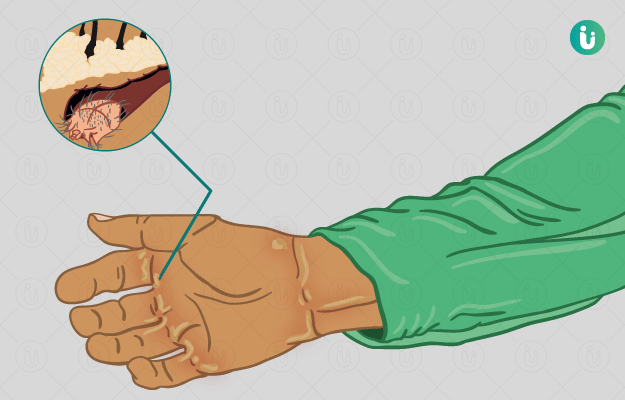What is scabies?
Scabies is a highly contagious infection caused by tiny itch mites (eight-legged bugs). These parasites (mites) are not visible to the naked eye, but make the skin their breeding ground. As the mites burrow under the skin and deposit eggs, the immune system responds by causing intense itching, which is typically increased at night. Young children and the elderly are more prone to the infestation of these mites. Likewise, hot climate can also trigger the condition. This can be further complicated by bacterial infection, which in turn causes skin sores, heart disease, septicaemia (bacterial infection entering the bloodstream) and even kidney disease.
With appropriate treatment, the itch mites die, and the infection goes away. However, if left untreated, it may further propel the mites to reproduce and aggravate the condition.
What are its main signs and symptoms?
Signs and symptoms of the condition are:
- Constant itching
- Rash or scaly skin
- Skin sores
The condition can develop anywhere on the skin surface; however, the following areas are affected the most:
- Hands, especially around the nails and between the fingers (finger webs)
- Armpits, elbows and wrists
- Nipples
- Groin
The incubation period of scabies is 8 weeks.
What are its main causes?
The itch mites can transfer from one person to another through direct skin contact as well as by sharing of bedding, clothes and even furniture. Likewise, it may get transmitted from mother to infant. Without a host, the lifespan of the mite is 3-4 days.
How is it diagnosed and treated?
Diagnosis of the condition is through prolonged itching and development of scabies nodules around the breasts and genital area. Further microscopic evaluation of the skin scrapings is also useful for confirmation of the condition.
By using appropriate creams, lotions, or tablets as needed complications of scabies can be prevented. Lotion and creams for the treatment of the infection are provided by the physician for application to the body from the neck down.
Similar treatment is also advised for all household members and sexual partners of the infected person. Re-treatment may be needed if itching or rashes are observed after discontinuation of treatment.
A few precautions can also be undertaken in this regard:
- Use clean bedding and clothing.
- Wash clothing at 50 Celsius and above.

 Doctors for Scabies
Doctors for Scabies  OTC Medicines for Scabies
OTC Medicines for Scabies


















